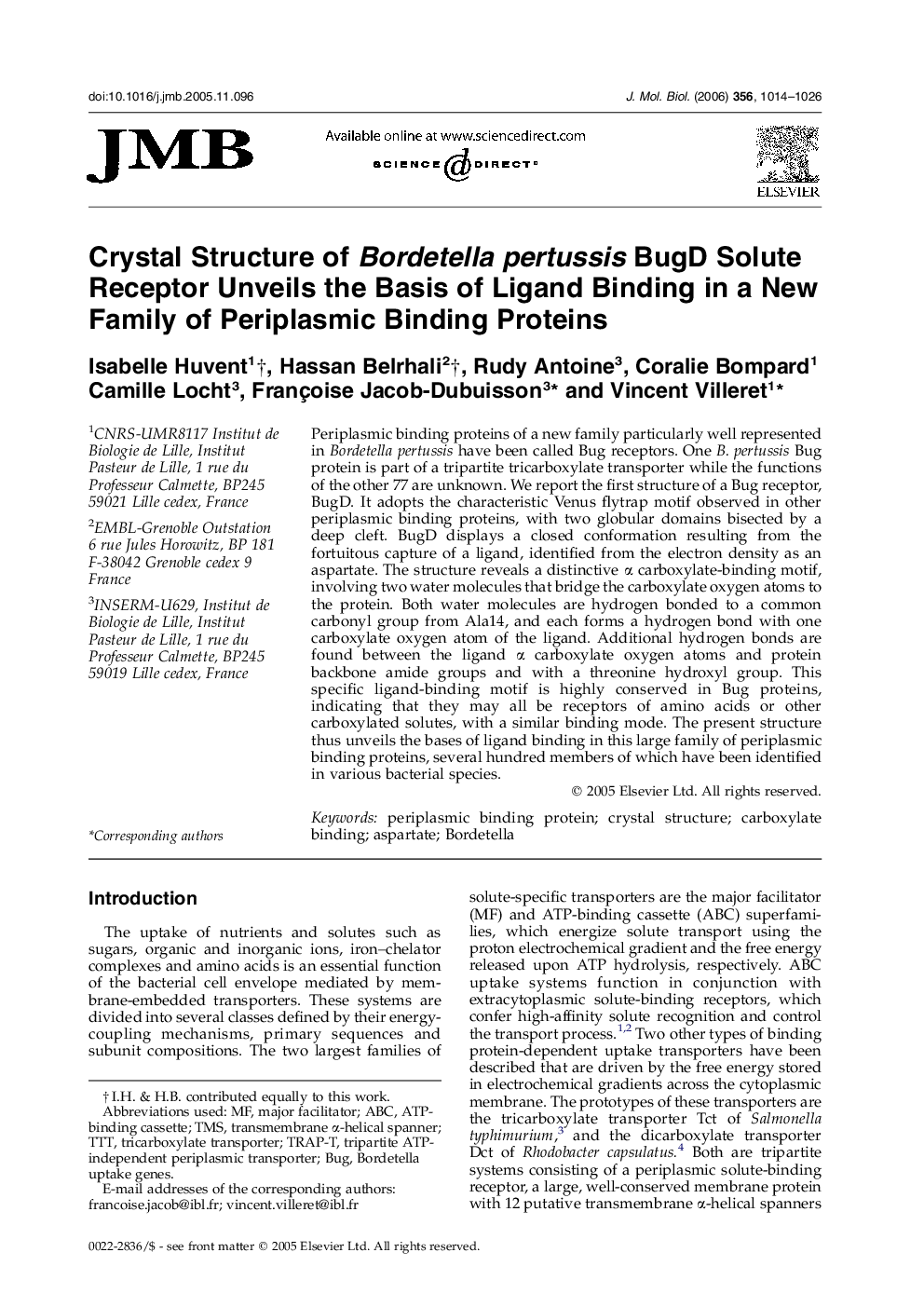| Article ID | Journal | Published Year | Pages | File Type |
|---|---|---|---|---|
| 2189891 | Journal of Molecular Biology | 2006 | 13 Pages |
Periplasmic binding proteins of a new family particularly well represented in Bordetella pertussis have been called Bug receptors. One B. pertussis Bug protein is part of a tripartite tricarboxylate transporter while the functions of the other 77 are unknown. We report the first structure of a Bug receptor, BugD. It adopts the characteristic Venus flytrap motif observed in other periplasmic binding proteins, with two globular domains bisected by a deep cleft. BugD displays a closed conformation resulting from the fortuitous capture of a ligand, identified from the electron density as an aspartate. The structure reveals a distinctive α carboxylate-binding motif, involving two water molecules that bridge the carboxylate oxygen atoms to the protein. Both water molecules are hydrogen bonded to a common carbonyl group from Ala14, and each forms a hydrogen bond with one carboxylate oxygen atom of the ligand. Additional hydrogen bonds are found between the ligand α carboxylate oxygen atoms and protein backbone amide groups and with a threonine hydroxyl group. This specific ligand-binding motif is highly conserved in Bug proteins, indicating that they may all be receptors of amino acids or other carboxylated solutes, with a similar binding mode. The present structure thus unveils the bases of ligand binding in this large family of periplasmic binding proteins, several hundred members of which have been identified in various bacterial species.
